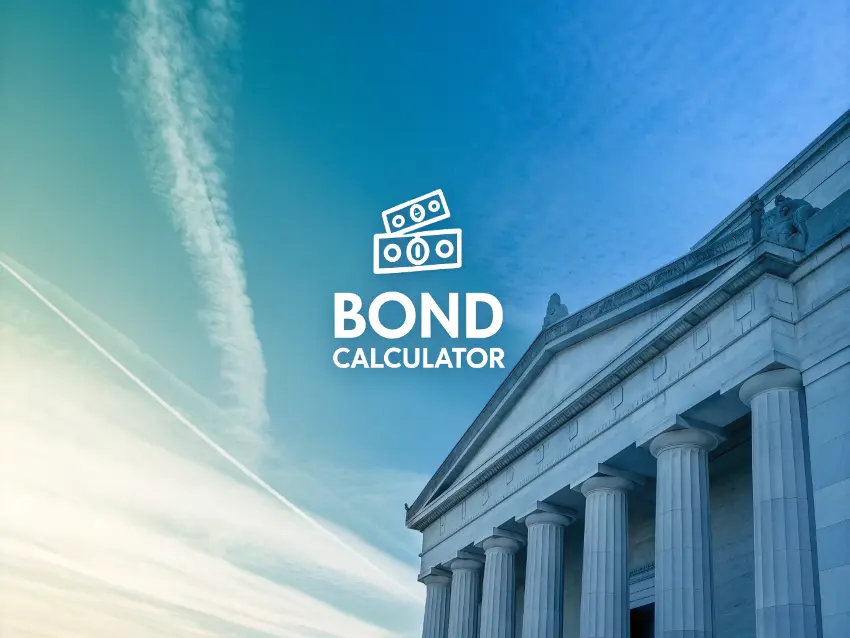Bond Calculator
Calculate bond prices, yields, and returns to make informed fixed income investment decisions with our comprehensive bond calculator.

Bond Calculations
Bond Price Formula:
P = Σ C / (1+r)^t + F / (1+r)^n
Where:
- P = Bond price
- C = Coupon payment
- r = Yield per period
- t = Time period
- F = Face value at maturity
- n = Number of periods
Bond Price is the present value of all future cash flows (coupon payments plus face value) discounted at the market yield.
Yield to Maturity (YTM) is the total return anticipated on a bond if held until maturity, expressed as an annual rate.
Current Yield is the annual coupon payments divided by the current bond price, giving a simple measure of the bond's return based on current market value.
$
%
years
%
Bond Analysis
Bond Price:
$0.00
Discount Bond(-100% of face value)
Annual Coupon Payment:
$0.00
Current Yield:
0.00%
Yield to Maturity (YTM):
0.00%
Total Return (if held to maturity):
0.00%
Analysis: The bond is selling at a discount because the coupon rate is lower than the market interest rate.
Understanding Bond Investments
Bond Relationships
- Price and Yield: Bond prices and yields have an inverse relationship. When bond prices rise, yields fall and vice versa.
- Coupon Rate vs. Market Rate: When market interest rates rise above the coupon rate, bond prices fall below face value (discount). When market rates fall below the coupon rate, bond prices rise above face value (premium).
Bond Risks
- Interest Rate Risk: When interest rates rise, the value of existing bonds falls. Longer-term bonds have higher interest rate risk.
- Credit Risk: The risk that the bond issuer will default on payments. Higher yields typically compensate for higher credit risk.
- Inflation Risk: Inflation erodes the purchasing power of the bond's future cash flows.
- Liquidity Risk: Some bonds may be difficult to sell at a fair price if the market for that bond is illiquid.
Types of Bonds
| Bond Type | Typical Maturity | Risk Level | Features |
|---|---|---|---|
| Treasury Bonds | 10-30 years | Very Low | Backed by the U.S. government, considered risk-free |
| Municipal Bonds | 5-30 years | Low | Tax advantages, issued by state/local governments |
| Corporate Bonds | 1-30 years | Low to High | Higher yields, risk depends on company creditworthiness |
| High-Yield Bonds | 5-10 years | High | Also called "junk bonds", higher yields but higher default risk |